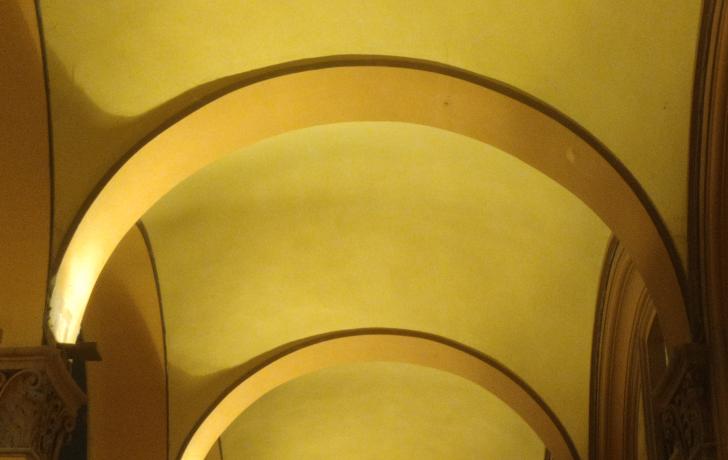The broker Joel Backman has left prison and is now involved in the shady trading of a very powerful software, he is hidden in Italy under the false name of Marco Lazzeri. Initially taken to Treviso, he is later moved to Bologna where he finds shelter in via Fondazza and learns Italian taking lessons from an abnormal university student and later from a charming tourist guide with whom later, naturally, sparks will fly. Beyond the complex stories to understand who wants him dead and a series of flashbacks between a first one, where Joel is a businessman without scruples, and one later where, having lost a lot of weight after many years in prison, enjoys a good meal at Cesarina, Bologna is very present with its urban configuration, which the medieval plan makes intricate, and with many porticoes on many occasions useful for ambushes and hiding.
The starring porticoes
They make their entry in the book on page 115: "The centuries-old pavements were occupied by kilometres of porticoes".
A few pages later the quality of this particular kind of architecture emerges: "At the end of via Rizzoli he turned around two blocks, and then again, to be sure he was not being followed, also because the long porticoes were very well adapted to tail anyone without being noticed". (page 128).
Some twenty pages ahead, instead, the protective function of the portico is fully understood and prized: "It started to snow again, lightly but abundantly, because the delivery trucks left the trail of their passage on the pavement of via Irnerio. Leaving the warmth of the bar, Marco once again marvelled at how much concern with the future the Bologna city planners had demonstrated centuries ago by covering the pavements of the city with more than thirty kilometres of porticoes..." (page 146).
And now, in a dialogue with one of the spies that watch him: "Does it snow often in these parts?" Marco asks / "Sometimes but not often and we have these wonderful porticoes that keep you dry / Excellent solution / Some are older than a thousand years. There are more porticoes at Bologna than in any other city in the world, did you know that?", indeed, anticipating Bologna's entry into the World Heritage List of UNESCO.
The stories of the American under cover intersect several other Bolognese monuments, San Petronio, San Francesco, the Nettuno, even a climb to the summit of the Asinelli Tower is not lacking.
Naturally, there is also space in the narration plot for a stroll under the longest portico of the world, described in a way possibly a little too didactic, without omitting the symbolic number of the 666 arches built in 65 years.
John Grisham spent a long time in Bologna to document himself and write this novel that at its time was presented in Santa Lucia. Invited by the rector of the time, Pier Ugo Calzolari, and by Mayor Cofferati, he was awarded the Turrita d’Argento. Grisham left the understanding that a film could be based on the novel: "If it is filmed", concluded the writer, "it would be set here and I will be back to present it. Surely gaining another ten kilos".
But what is left of this city to Joel/Marco? He clearly states it on page 224, answering the beautiful guide:
"- Do you like my city?
- Yes, a lot
- What do you like about it in particular?
- It is a true city, the people live where they work. It is safe and clean, a timeless place where the passage of the centuries has not changed very much. And the residents enjoy all this and are proud of their lives".
Who knows if, twenty years later, the answer would be the same.
John Grisham, Il broker, Traduzione di Renato Pera, Milano Mondadori, 2005
(ed. orig.: The broker, Belfry Holdings, Inc., 2005)
https://magazine.unibo.it/archivio/2005/09/09/johngrisham
photo by Maria Beatrice Bettazzi

